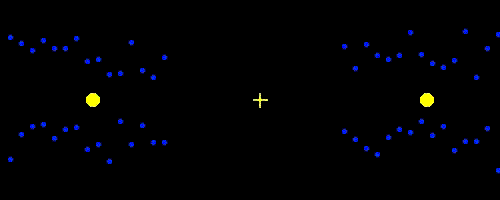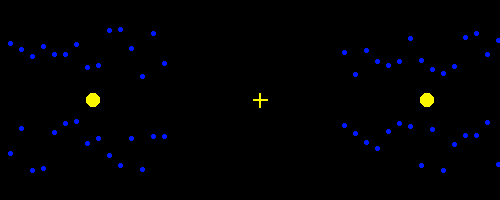
|
Motion-Induced Blindness
We have been studying a particularly striking illusion called motion-induced blindness (MIB), in which moving objects can make stationary ones seem to sporadically disappear, despite remaining physically present.
Click here to see an interactive demonstration
We have conducted experiments suggesting that motion-induced blindness is linked to a visual mechanism that allows us to experience the world in sharp detail. Our visual system has a time lag, and acts somewhat like a camera with a slow shutter speed. This means we should perceive “motion streaks” behind moving objects. While this can be apparent when we watch the movement of sparklers at night, we are not usually aware of motion steaks because there is a mechanism that prevents them from reaching awareness. Our experiments suggest that motion-induced blindness is linked to this mechanism.


Our data demonstrates that targets located towards the trailing edges of motion undergo greater MIB than targets at the leading edges of motion.
In the movies above, stare at the central crosses and pay attention to the yellow dots to either side. They should seem to intermittently disappear. Our observers signaled that the dots disappeared more when the moving dots difted away from, rather than toward, the static yellow dots.
For a full description of this research, please see the published account: